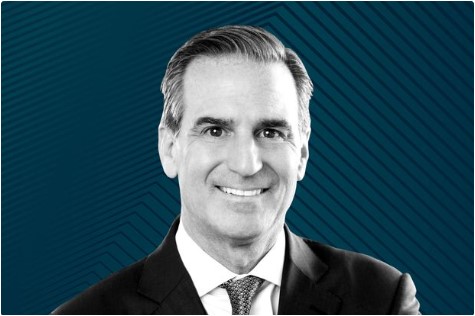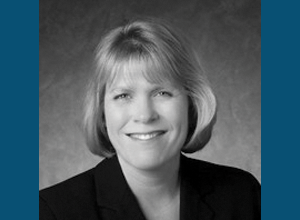Today’s higher PPI & lower jobless claims support the Fed’s stance that the market isn’t ready for cuts yet, portfolio manager Clayton Allison told Vivien Louchen and MarketWatch.
Prime Capital Investment Advisors Acquires Liberty Wealth Advisors
PCIA is pleased to announce that it has acquired substantially all of the assets of Liberty Wealth Advisors, a $1.75 billion wealth planning and investment management firm with clients in more than 45 states*.
Prime Capital Investment Partners With Professional Financial Services
PCIA, is pleased to announce their new partnership with Professional Financial Services. PCIA’s acquisition expands PCIA’s national footprint and adds $185 million in assets under management as of the end of October 2022.
Scott Duba Featured: 7 High-Return, Low-Risk Investments for Retirees
Scott Duba, chief investment officer and managing director of wealth management, offers his perspective on some low-risk investment options for retirees.
Prime Capital Investment Advisors Adds More Than $1B With Twin Acquisitions
“We know that we have to be growing to remain vibrant as an organization,” PCIA CEO Glenn Spencer said.
Wendy Prestwood Joins Prime Capital Investment Advisors
PCIA is pleased to announce Wendy Prestwood, CMFC, CRPC, has joined the firm as Partner and Wealth Advisor. She has 25 years of experience in the industry and is based out of the Overland Park, KS office.
Mary Lucas Joins Prime Capital Investment Advisors
Prime Capital Investment Advisors (PCIA) is pleased to announce Mary Lucas as its new director of financial planning and client experience. In her new role at PCIA, Lucas will use her experience to take the firm’s financial planning practice to the next level.
Q1 Quarterly Client Update

What a Difference a Year Makes
This time last year, we were all forced to make drastic changes to our everyday lives — working from home, acting as educators to our children and grandchildren, and settling in for the unknown long-term. Fortunately, there is finally optimism and a shred of pre-pandemic normalcy. As the first quarter of 2021 closed, we are just over a year removed from the Federal Reserve’s (Fed) announcement of the intent to provide significant liquidity to the markets, restoring confidence, and seeing the market bottom on March 23, 2020. One-year returns from 03/31/2020 to 03/31/2021 are remarkable, led by small- and mid-sized companies, as measured by the Russell 2000 and S&P MidCap 400, gaining +94.85% and +83.46%, respectively. While large company indexes lagged, the +56.35% return on the S&P 500 and +72.04% gain on the tech-heavy NASDAQ over the same period are nothing to sneeze at. Given the global capital market synchronization, factored with a weaker dollar, it should not be surprising that the foreign markets turned in solid gains over the last year of +44.57% and +58.39% on the MSCI EAFE and the MSCI Emerging Market Index, respectively. Though the yield on the 10-Year Treasury has more than tripled since bottoming in 2020 (prices and yields have an inverse relationship; as yields go up, bond prices go down), the Bloomberg Barclays U.S. Aggregate Bond Index still delivered a +0.71% return.
To the Moon?
While equity markets ended the quarter in positive territory, the road to gains was anything but smooth. Late January brought about the ‘Reddit Revolution,’ whereby hordes of retail investors banded together in taking a fight to Wall Street. Their primary focus was small companies with extreme levels of short interest, such as GameStop (GME) and AMC Entertainment Holdings (AMC), intending to send the stock prices ‘to the moon.’ What started as a message board for people to invest their stimulus money morphed into a movement, pitting Main Street against Wall Street, albeit short-lived. Investors’ attention quickly turned to the spike in longer-dated yields, prompting fears that inflation will exceed the Fed’s target of 2%, forcing them to a reduction in their accommodative policy sooner than planned. These fears essentially caused the general market to move in the opposite direction of yields day by day (if yields went up, equities went down, and vice versa). The market’s yield sensitivity sent the tech sector reeling, pushing the NASDAQ into correction territory (10% or more contraction). A rotation out of large- and mega-cap companies into smaller companies continued to lead equity markets higher, with S&P MidCap 400 and Russell 2000 generating +13.47% and +12.70%, respectively. While not as impressive, the S&P 500 delivered a solid +6.17% return, and the NASDAQ, even with contraction, brought up the rear gaining 2.78% year-to-date.
Uneven COVID containment across emerging market countries, along with varying degrees of inoculation success and rising US yields, saw the MSCI Emerging Market Index experience increased levels of volatility yet delivered a positive return of +2.29% in the first quarter. Conversely, foreign developed countries (primarily Europe) continue to lag the US in vaccine rollout progress and suffer from tighter mobility restrictions which threaten the near-term recovery. Yet, the MSCI EAFE Index gained +3.48% for the period. A weakening US dollar served as a tailwind for investments outside of the US in 2020, but thus, far in 2021, the dollar has strengthened, thereby dragging down foreign markets’ performance.
A third major Congressional COVID Relief Package coupled with extraordinary monetary support from the Fed and easing of COVID restrictions caused a lift in growth projections – and higher inflation expectations. Consequently, the bond market, with yields on the 10-Year Treasury up +0.84%, closed the quarter at 1.75% resulting in equity investor anxiety. This inverse relationship bond prices have with yields booked a return on the Bloomberg Barclays U.S. Aggregate Bond Index down -3.37% for the quarter.

From Cold to Hot?
After the February freeze, the economy is heating up. With $600 checks from the late December Congressional stimulus package in hand, consumers started spending, as evidenced by the revised 7.6% jump in Retail Sales experienced in January, the fastest pace in seven months. Retail Sales contracted in February, as did other economic indicators resulting from the Arctic freeze that essentially closed activity for multiple weeks during the month. Strong January sales, along with another round of stimulus checks in mid-March, accelerated reopening, and accumulated savings, should boost spending for March and beyond. Given that the consumer accounts for roughly 70% of our economy’s output, spending is a significant driver for economic growth. The composite Purchasing Managers Index (PMI) has
round of stimulus checks in mid-March, accelerated reopening, and accumulated savings, should boost spending for March and beyond. Given that the consumer accounts for roughly 70% of our economy’s output, spending is a significant driver for economic growth. The composite Purchasing Managers Index (PMI) has accelerated recently, well beyond pre-COVID
accelerated recently, well beyond pre-COVID
levels, registering all-time highs of 63.8. A reading above 50 indicates expansion, while a number below 50 indicates contraction; composite PMI comprises Manufacturing and Services PMI. The service-oriented industries sector, including leisure, travel, hospitality, dining, etc., shut down in March of 2020, resulting in a massive contraction in services. Yet, as mandates were lifted or loosened, these sectors’ activity picked up significantly, rising to levels we have not seen in nearly
two years. Since our economy is primarily services-oriented, it is clear that our services sector’s health is essential to a sustainable recovery. Fiscal COVID relief and accelerated economic activity have led many to increase their first quarter and full-year GDP outlooks. Bloomberg forecasts a first quarter acceleration of +6.0% GDP output and 7.7% for the year, with the
second and third quarters clocking in at 11% and 10%, respectively. The last time the economy grew at a similar pace was following the 1981-82 recession when growth accelerated at 7.9% in 1983.
One area of the economy still suffering impairments is the labor market. The April 2020 unemployment rate peaked at post-Great Depression highs of 14.7%. While the headline unemployment rate has continued to recover, with March’s unemployment rate falling to 6.0%, the bottom line is that while momentum in the labor market is developing, it is still fractured. First-time unemployment filings are averaging more than 700,000 per week and remain elevated over the 2008 Great Financial Crisis’s peak. Returning the labor market to pre-pandemic maximum employment levels is one of the Federal Reserve’s primary objectives, a requirement before consideration of raising rates. By their admission, a long road ahead remains. The Fed’s recent forecasts suggest that hiring will continue to accelerate as vaccines are administered, pushing the unemployment rate down to 4.5% by the end of the year. February gains of 468,000 were restrained by the month’s arctic weather, but March saw a spike of 916,000 new jobs added. This trend expects to continue, and we would not be surprised to see more than a million jobs added over each of the next several months. Given the economy needs an average run rate of 400,000-500,000 new jobs per month to approach an unemployment rate near 4% by the end of 2022, the significant, expected gains are undoubtedly welcome.
Economic and market indicators are often presented as year-over-year statistics, so as data releases in the coming months, they may seem extraordinarily large due to the base effect. Essentially many economic indicators were in the basement this time last year which suggests data today may appear inflated from reality over the next several months. Arguably no data point has been more debated and in the spotlight than inflation. Inflation measures the rate of increase in prices of goods over a given period, and high inflation levels can damage productivity and economic growth. Last year prices fell in March and April and remained low in May. As such, the year-over-year increases for March through May will likely appear inordinately high. Since the Fed is targeting an average inflation level of 2%, these reports are critical to monitor and decipher, which may prove more difficult when accounting for the recent $1.9 trillion pandemic relief package. Given significant monetary and fiscal stimulus provided over the last year and supply chain disruptions resulting from the pandemic, it is hard to envision an outcome where inflation does not rise. Some would suggest that we are positioned for hyperinflation. In contrast, others like the Fed and Treasury Secretary, Janet Yellen, believe we will experience higher inflation levels, though the elevated levels will prove transitory and will ultimately normalize. They have been vocal about their expectations and the impact of the base effect over the coming months. While they have communicated their expectations surrounding the illusory readings expected, we would not be surprised if some investors still view elevated readings as confirmation that inflation is surging, which could lead to market volatility in both equities and bonds.
Since the Fed is targeting an average inflation level of 2%, these reports are critical to monitor and decipher, which may prove more difficult when accounting for the recent $1.9 trillion pandemic relief package. Given significant monetary and fiscal stimulus provided over the last year and supply chain disruptions resulting from the pandemic, it is hard to envision an outcome where inflation does not rise. Some would suggest that we are positioned for hyperinflation. In contrast, others like the Fed and Treasury Secretary, Janet Yellen, believe we will experience higher inflation levels, though the elevated levels will prove transitory and will ultimately normalize. They have been vocal about their expectations and the impact of the base effect over the coming months. While they have communicated their expectations surrounding the illusory readings expected, we would not be surprised if some investors still view elevated readings as confirmation that inflation is surging, which could lead to market volatility in both equities and bonds.
The rest of the Quarterly Update covers the Federal Reserve, Congressional Stimulus, and other Implications moving forward. Read more.
—
The preceding commentaries are (1) the opinions of Chris Osmond and Eric Krause and not necessarily the opinions of PCIA, (2) are for informational purposes only, and (3) should not be construed or acted upon as individualized investment advice. Investing involves risk. Depending on the types of investments, there may be varying degrees of risk. Investors should be prepared to bear loss, including total loss of principal. Past performance is no guarantee of future results.
Advisory services offered through Prime Capital Investment Advisors, LLC. (“PCIA”), a Registered Investment Adviser. PCIA: 6201 College Blvd., 7th Floor, Overland Park, KS 66211. PCIA doing business as Qualified Plan Advisors (“QPA”) and Prime Capital Wealth Management (“PCWM”).







